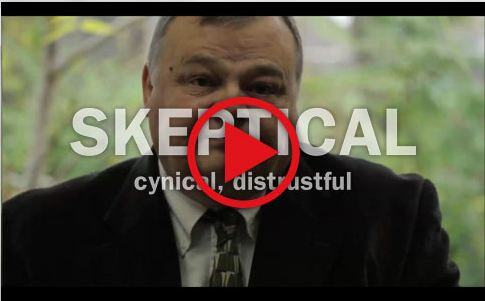 I worked with an organization several years ago to develop a leadership coaching program. When I asked my client what the problem was, he said, “It is okay to be a jerk as long as you’re hitting your numbers.”
I worked with an organization several years ago to develop a leadership coaching program. When I asked my client what the problem was, he said, “It is okay to be a jerk as long as you’re hitting your numbers.”
The organization’s sales leaders were operating in an alienating manner, but this behavior was excused because they were meeting their goals. When those sales dipped, they didn’t have trusted confidants to point out industry and competitive shifts that led to the decrease.
I liken this to the feedback some people receive regarding the things they say and the way they say them. It’s one thing to be right, and quite another to be rude about it. For a leader, being right is driving successful business results. Saying those things in the right way demonstrates the humility necessary to build relationships. Both factors must be present for individuals to attain leadership excellence.
Now consider NBA basketball star LeBron James. In the 2010 offseason, James signed as a free agent with the Miami Heat and faced a storm of criticism as the result. Why was he vilified when so many players in the sports world today opt to go the free agent route? It all goes back to what you say, and how you say it.
LeBron could have chosen a team to sign with and demonstrated professional courtesy to the other teams under consideration by informing them of this move in advance of holding a press conference. Instead, he strung teams along, including Cleveland, and announced his decision in a highly publicized and criticized ESPN live special entitled “The Decision.” LeBron and his Miami Heat teammates then hosted what appeared to be a post-championship celebration in their home arena before the season had even begun. Rather than a confident showman focused on the new goal ahead, many fans and media members saw arrogance and over-the-top flamboyance. The most notorious moment came when LeBron discussed his new team winning multiple championships as if it was a foregone conclusion.
LeBron was now firmly cast as a bad guy, yet even in this new role and on a new team he came up short yet again in the NBA championship series. The sports media criticized LeBron for not performing up to the level expected during crunch time moments of the 4th quarter. Unlike the last time he lost the big game, he was not given a pass.
This is the essence of leadership derailment. Derailing behaviors tend to emerge as coping mechanisms when we face stress or adversity. Over time these behaviors erode relationships. In the grand scheme of things, our positive achievements may outweigh our derailing moments in terms of sheer number. Regardless, the magnitude and weight of those derailing actions when we are at our worst tend to overshadow much of the good work we have done.
LeBron was likely coping with stress and adversity. He had always lived and played basketball in Ohio up to that point, and last season was clearly a time of stressful decisions and transitions. His charisma, showmanship, and confidence allowed him to harness his talents and become an MVP. These same characteristics became strengths overused and the negative moments are quickly becoming the first thing that comes to mind when thinking of LeBron. The 2012 season appeared to be the year of a humble King James until a recent altercation with a fan during a game has further perpetuated his bad guy image.
On my way to the airport this week, I heard a sports talk radio personality characterize LeBron as a good guy who tends to say or do things in big moments that rub people the wrong way or bring into question his ability to deliver in the clutch. These derailing moments will likely permeate his legacy and overshadow his multitude of great on-the-court achievements unless he is able to win multiple championships. Like those sales leaders I worked with years ago, it’s okay to be a jerk as long as you are hitting your numbers; however, true greatness is likely achieved through equal doses of driving results and demonstrating humility.
 ership is crucial for a company’s success. Recent studies indicate that businesses with strong leadership are 13 times more likely to outperform their competition, and three times more likely to retain their most talented employees.
ership is crucial for a company’s success. Recent studies indicate that businesses with strong leadership are 13 times more likely to outperform their competition, and three times more likely to retain their most talented employees.

 d leadership skills do not necessarily generalize to a global setting. Leadership skills are distinct from having a global perspective, and successful global leadership requires both. The folks at Thunderbird have a robust body of research on the concept of global mindset, complete with a measurement tool (the Global Mindset Inventory, or GMI) and taxonomy of skills and attributes. The good news is that global mindset can be developed. The bad news is that not nearly enough organizations are actively developing global mindsets in their leadership talent pools or organizations.
d leadership skills do not necessarily generalize to a global setting. Leadership skills are distinct from having a global perspective, and successful global leadership requires both. The folks at Thunderbird have a robust body of research on the concept of global mindset, complete with a measurement tool (the Global Mindset Inventory, or GMI) and taxonomy of skills and attributes. The good news is that global mindset can be developed. The bad news is that not nearly enough organizations are actively developing global mindsets in their leadership talent pools or organizations.  Drs. Kevin Meyer and Jeff Foster will participate in a group forum discussing one of the most popular topics in management training and development – managing workers from different generations. Results will be presented that represent a unique and comprehensive examination of generational differences in individual workplace values and interests to test the popular assumption that differences exist between generations. The session will be held Friday, April 27 at the
Drs. Kevin Meyer and Jeff Foster will participate in a group forum discussing one of the most popular topics in management training and development – managing workers from different generations. Results will be presented that represent a unique and comprehensive examination of generational differences in individual workplace values and interests to test the popular assumption that differences exist between generations. The session will be held Friday, April 27 at the

 Drs. Robert and Joyce Hogan will be joined by Robert Kaiser of Kaiser Leadership Solutions, Darren Overfield of Kaplan DeVries, Inc, Maret Kassner and Rene Kusch of Metaberatung GmbH, Michael Benson of Johnson & Johnson, and Peter Moser of Swissport International Ltd, to present 4 integrated presentations on the topic of theory-driven, personality-based leadership development.
Drs. Robert and Joyce Hogan will be joined by Robert Kaiser of Kaiser Leadership Solutions, Darren Overfield of Kaplan DeVries, Inc, Maret Kassner and Rene Kusch of Metaberatung GmbH, Michael Benson of Johnson & Johnson, and Peter Moser of Swissport International Ltd, to present 4 integrated presentations on the topic of theory-driven, personality-based leadership development. I worked with an organization several years ago to develop a leadership coaching program. When I asked my client what the problem was, he said, “It is okay to be a jerk as long as you’re hitting your numbers.”
I worked with an organization several years ago to develop a leadership coaching program. When I asked my client what the problem was, he said, “It is okay to be a jerk as long as you’re hitting your numbers.”
